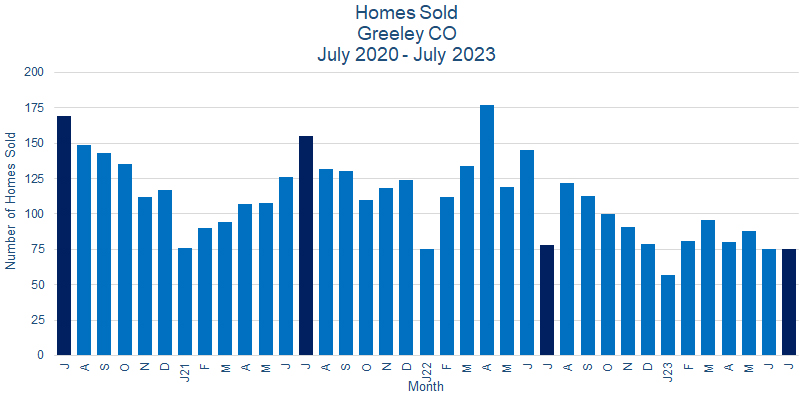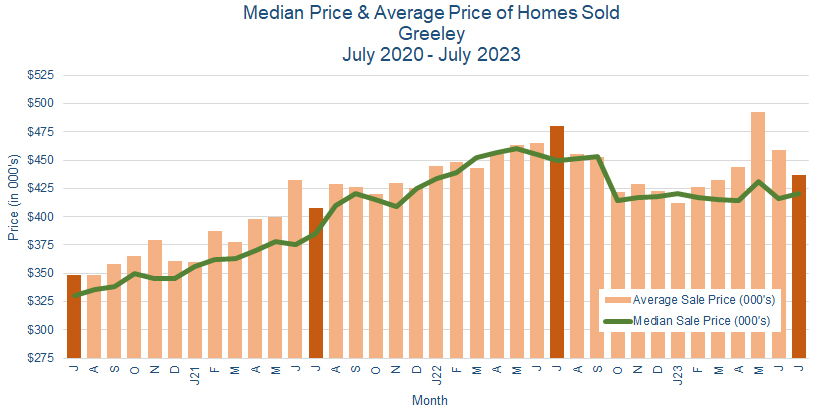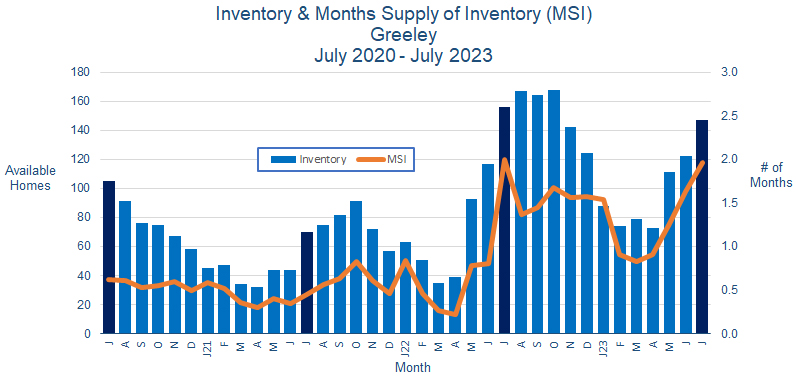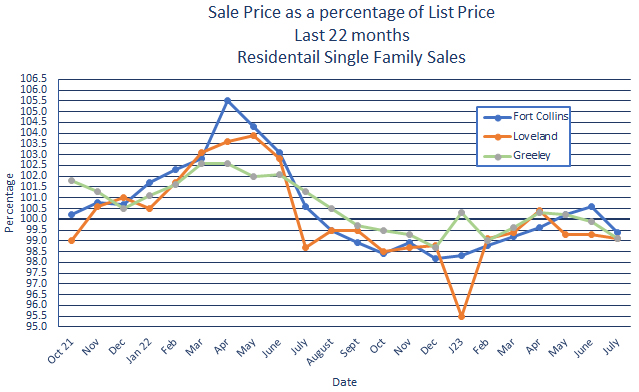This is the August 2023 Real Estate Market Update for Greeley CO
Sales:

Home sales in Greeley CO were flat in July 2023. There were 75 homes sold, equal to the 75 sold in June 2023, but down 3.8% from the 78 homes sold in July 2022. 2023 year-to-date sales of 552 homes were down 34.3% from 2022's 840 sales for the same period.
Prices:

Home prices were mixed in July 2023. The median price gained 0.9% to $420K from $416K in June 2023, while the average price fell 4.8% to $437K from the previous month's $459K. These numbers reflect only those homes sold during the month and show a generally flat trend line for the last year.
Inventory:

The inventory of homes for sale in Greeley CO continued to rise in July 2023. 147 homes were available for sale at the end of the month, up 20.5% from the 122 homes on the market at the end of June 2023. The month's supply of inventory (MSI) rose to 2.0 months from the previous month's 1.6, as inventory gained and sales held steady.
Sales Price vs. List Price:

In July 2023, homes sold for an average of 99.1% of listing price, down from the previous month's 99.9%.
Summary:
Sales were flat, prices were mixed, and inventory up during July 2023, typically one of the busiest months of the year. We would usually expect sales at a higher level, prices stable to rising, and inventory leveling off after increasing over the spring. But what has driven a typical July market is not what's at work here.
While the upper third of the market seems to be working more or less normally, there is an imbalance between supply and demand in the low-to-mid price ranges. In those market segments, demand has been more constrained by the price and interest rate increases that affected all of the housing supply over the last 2 years. Simply put, prices, along with the costs of owning a home, have risen faster than incomes, and a substantial number of potential buyers have been priced out of the market. This effect has been magnified by uncertainty over job stability and the state of the economy.
And on the supply side, potential sellers, faced with that same uncertainty and a more expensive move up, have become more reluctant to sell, in spite of higher values on their current home. The result is simply that both the number of people capable of purchasing a home and the local real estate market have gotten smaller.
While there have been times when housing was a major driver in the economy, at this point the real estate market is in a much more responsive mode, subject to external conditions of uncertain outcome. For the time being, we can expect a continuation of these conditions. We're entering a typically slower time of the year, and while we're well out of "typical" range, there don't appear to be any structural changes in the economy that would lead to rapid improvement in conditions.
